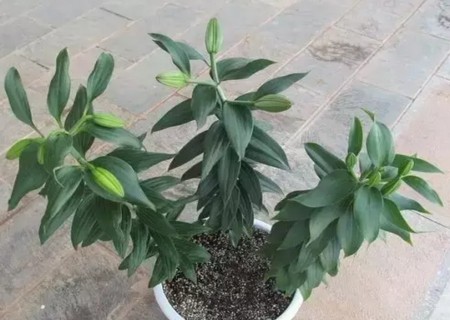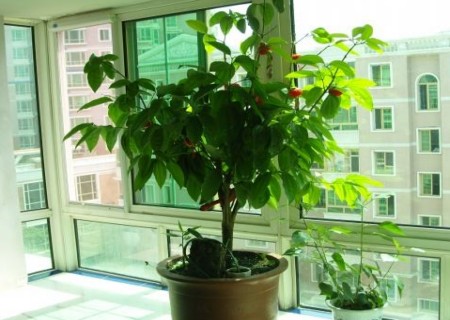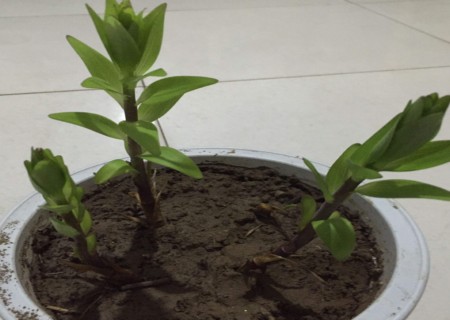How to grow lily bulbs
Lily is a world-famous flower that has been loved from ancient times to the present. Many people still have the impression of a variety of ornamental flowers in the impression of lilies, but they do not know that lilies also have high dietotherapy and drug therapy value. Lily is used in all kinds of diet of health care. At the same time, as a traditional Chinese medicine, lily has high medicinal value.

What should I do if I receive the lily seed ball
First of all, to understand the basic situation, the three varieties are Siberia 16-18 with white flowers, Tiber 14-16 with pink flowers, and wooden doors with yellow flowers (also known as Congardeo) 16-18. The size of the lily bulb is calculated according to the perimeter. Generally, the bulb is mostly 14-16, 16-18, 18-20. The bigger the bulb, the more flowers it will bloom. The bulb has sprouted, and the bud is about 3 cm long.
2. Planting time of lilies
The best planting time is from February to April every year. The probability of premature death, infertility and bud termination in other seasons is much higher than that in February-April.
Third, the planting process of lily bulb
Pruning and rooting at the bottom of the bulb: trim the bad roots under the bulb and cut off the rotten roots or bad roots! Pay attention to only the roots that are not well trimmed!
Seed ball disinfection: rinse the trimmed seed ball with water and soak it in 80-1000 times carbendazim solution for half an hour.
Flowerpot: in this case, an AC300-sized flowerpot is used with an inner diameter of 24 cm.
The bottom of the flowerpot: in order to ensure the performance of water seepage, put a layer of broken plastic foam at the bottom of the flowerpot, which should be available at home. You can use broken tiles or bark.
Load soil: load the soil into a flowerpot, about 10 cm. The soft acid soil was selected, and the case soil was used as the base soil for raising seedlings.
Put in the seed ball: conditionally add 5-10g compound fertilizer to the subsoil and mix well, so that the ball. No fertilizer was added in the case. Put the sterilized seed ball into the flowerpot, notice that the bottom of the three seed balls are opposite each other, tilting about 60 degrees.
Cover soil: add the soil to the basin and cover the seed ball. In order to let the seed ball sprout smoothly, the bud tip is exposed to the soil surface of about 0.5 cm. Remember not to fill the soil to the edge of the pot. as the plant grows higher, we need to add soil later to ensure that the lily grows more stems and roots, which is very important in the process of potted lilies.
Watering: after planting, water thoroughly. Put it in a cool place to promote growth and roots.
IV. Start maintenance
Lily is a perennial herb, belonging to Asia, its habit is to like a warm, moist and sunny environment, and to ensure a nutritious soil, lilies are very beautiful when they bloom. Light, soil, moisture and other considerations.
1. Lighting management
There is a special need for sufficient light during flower bud development. Sunshade nets should be used for pot lily production in summer, shading 50% and 70% shading; autumn, winter and spring production should be shaded when lilies take root in order to reduce soil temperature, and then the sunshade net should be removed in time to ensure adequate light.
2. Temperature management
The most suitable condition is O ℃-13 ℃, too low will prolong the growth period, and more than 15 ℃ will affect the product quality, so we should pay attention to shading and ventilation. The temperature can be increased gradually after the stem and root grows. The temperature during the day is controlled at 20 ℃-25 ℃, and the temperature at night is different for different types of lilies.
3. Water management
Pot lily growth period should often keep the pot soil moist, but to avoid too wet, otherwise affect the root growth. Watering should be carried out in the morning, often check whether the flowerpot is stagnant water, if stagnant water should be dealt with in time.
4. Fertilization
3-4 weeks after potted lily planting, a small amount of fertilizer was applied (lily avoid heavy fertilizer), and soil application was combined with leaf application. Nitrogen fertilizer can be added in the early stage, 1% urea + 0.5% potassium dihydrogen phosphate + 0.05% borax aqueous solution soil is applied 2-3 times, after budding, 0.3% potassium nitrate + 0.1% potassium dihydrogen phosphate aqueous solution is applied 1-2 times, when lily leaves show symptoms of iron deficiency and yellowing, soil application of 0.5% ferrous sulfate solution.
5. The pots of potted lilies should be changed once a year and replaced with new culture soil and base fertilizer. In addition, the growing period also turns the flowerpot once a week, otherwise the plant is easy to be too long, affecting the beauty.
6. Pest control
The common diseases of potted lily are leaf blight, gray mold, root rot, bulb rot and blight. The pests of potted lilies are mainly aphids. The control methods are as follows: ① removes weeds in and around the pot; ② is sprayed with 80-1000 times of 40% dimethoate emulsion or 2000-4000 times of 2.5% deltamethrin.
Several aspects to pay attention to when selecting potted lilies:
A look at the bud, there are several buds, the more buds, the longer the florescence, the size of the buds, generally choose buds, 3 to 5 centimeters just about to show color.
Second, look at the leaves, the leaves are green, the leaves are yellow or the feet are yellow, the leaves may be dwarfed, and the leaves will fall out.
Look at the pole and choose the one that is stout and the plant is consistent.
Time: 2019-05-24 Click:
- Prev

Planting methods of potted safe trees
Ping an tree is an evergreen plant, which can change the home environment and provide a large area of greening for the interior. At the same time, it can also remove indoor odor, improve air quality and bring peace to the family. Ping an tree is a kind of foliage plant, which means peace. It is a common fengshui plant. It can purify the air and bring health to people.
- Next

Planting methods of potted lilies
Lily is native to Eurasia and North America and is distributed in Hubei, Shaanxi, Shanxi, Henan and Hebei provinces in China. Lily has become one of the five famous fresh cut flowers because of its large flowers, colorful, dignified and graceful posture, which can be watched in pots or arranged in flower mirrors in flower beds. Its bulb is fresh and tender and rich in nutrition.
Related
- Fuxing push coffee new agricultural production and marketing class: lack of small-scale processing plants
- Jujube rice field leisure farm deep ploughing Yilan for five years to create a space for organic food and play
- Nongyu Farm-A trial of organic papaya for brave women with advanced technology
- Four points for attention in the prevention and control of diseases and insect pests of edible fungi
- How to add nutrient solution to Edible Fungi
- Is there any good way to control edible fungus mites?
- Open Inoculation Technology of Edible Fungi
- Is there any clever way to use fertilizer for edible fungus in winter?
- What agents are used to kill the pathogens of edible fungi in the mushroom shed?
- Rapid drying of Edible Fungi

